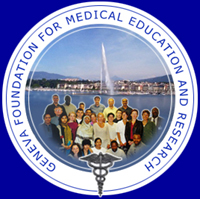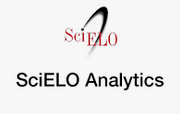Handbook for the study on the skull norms: it teaching relevance in Human Anatomy
Manual para el estudio sobre las normas del cráneo: su pertinencia docente en Anatomía Humana
Beatriz Machado Díaz, María del Carmen Guevara Couto, Olga Torres Manresa, Yanet Limas Pérez
Villa Clara University of Medical Sciences. Cuba.
ABSTRACT
The study of cranial norms presents great complexity and its contents are scattered in different literatures that are not very accessible. For this reason a text was developed as a handbook aid on the subject, intended for the preparation of residents of the Human Anatomy specialty, which, in addition to the core contents, contains aspects related to clinical linkage, so necessary for a comprehensive preparation. It is the objective of these authors to describe its conformation and availability so that it can serve as a reference material for those interested in its use.
MeSH: handbooks, students, education, medical.
RESUMEN
El estudio de las normas del cráneo presenta gran complejidad y sus contenidos se encuentran dispersos en diferentes literaturas poco accesibles. Por tal motivo se elaboró un manual como material de apoyo sobre el tema, destinado a la preparación de los residentes de la especialidad de Anatomía Humana, el cual, además de las invariantes de contenidos propios contiene aspectos relacionados con la vinculación clínica, tan necesaria para una preparación integral. Es objetivo de estos autores describir su conformación y disponibilidad a fin de que pueda servir como material de consulta para los interesados en su uso.
DeSC: manuales, estudiantes, educación médica.
The contents referring to the Human Anatomy have been and will be one of the fundamental foundations in the education of health professionals.1,2 Although as a science it has evolved historically, fundamentally for the scientific-technical development, anatomy constitutes the oldest of the basic biomedical sciences.
The advancement of technology in medicine in recent years has driven the development of new resources for the teaching of anatomy supported by electronic processes and materials used in teaching, so that what is learned in this basic discipline will serve as a pillar for future clinical matters.3
The authors of this paper consider that the Human Anatomy program generalizes the positive experiences accumulated in this science in the years since the triumph of the Cuban Revolution; for the training of the specialist this means the appropriation of a dialectical-materialist approach that allows a better understanding of man as part of a universal system.
Particularly, in the second year of the residency, in the area of deepening and preparation for teaching, the subject Anatomy of the Locomotive Apparatus is taught, with the aim of explaining the functional morphological characteristics of the structures that make up the human organism, and in particular, the locomotive apparatus with an integrated approach to other morphological sciences, which calls for the need to prepare teaching aids in order to adequately fulfill the specialist's tasks.4
In the teaching-learning process, the teaching aids or learning resources act as communication channels and serve as support for the methods to enable the achievement of the objectives; among them, the teaching literature constitutes an elementary component to achieve a positive learning of the contents declared in the study plans.5 However, from the analysis of the program and the methodological orientations of the Human Anatomy specialty for residents, it was evidenced that there is a lack of updated bibliography and that the available one is insufficient, it´s scattered and has little connection with the clinic, aspects that limit the knowledge of the residents and restrict their level of scientificity; In addition, in a questionnaire applied to them it was found that there are difficulties in terms of the logical order of the contents, particularly in the topic related to the skull as a whole, and its integration.
For the preparation of the text the specialty program was reviewed, emphasis was placed on the study of the objectives and analytical contents of topic II: Passive part of the locomotive system, and as a sub-theme: The bone head as a whole. We consulted the basic bibliography recommended by the program: Human Anatomy. Volume I, from Prives and other texts available in the reference library: Moore's Anatomy with Clinical Guidance; Anatomy for Students, by Drake; Human anatomy. Descriptive, Topographic and Functional, Volume I, by Rouviere; and Atlas of Human Anatomy, of Netter, which in their great majority constitute exclusive consulting units in the libraries.
This material can be used as a reference literature in the undergraduate program. It is printed and available in the Department of Human Anatomy of Villa Clara University of Medical Sciences, and in electronic format at the following electronic address: http://webftp.ucm.vcl.sld.cu/docencia/Medicina/Residentes /Anatomia/Craneo-en-your-set.docx
In its introduction the conceptual generalities of the skull are exposed, which include the division for its study; its bones and the detailed description of this part of the skeleton, taking into account the different norms or views. The developed contents are:
-
Skull regulations. Logical order for its study.
-
Frontal norm: bones that make it up, joints present, relevant anatomical details, anatomical details by bones, holes and other openings present in the norm and its content.
-
Orbital cavity: bones that make it up, walls and bones that make up these walls, holes, content and communications.
-
Basic-clinical bonding: traumatisms of the superciliary arches, fractures of the jaws and associated bones and fractures of the jaw.
-
Lateral norm: bones that make it up, joints present in the adult and newborn skull, craniometrical points of the skull, anatomical details by bones and division for the study of the norm.
-
Temporal fossa: limits and bones that participate in its formation.
-
Infratempora fossa l: location, walls, boundaries, holes, content and communications.
-
Pterygopalatine fossa: location, walls, content, pterygopalatine portion of the maxillary artery, maxillary nerve, orifices, contents and communications of the fossa.
-
Basic-clinical linkage: fontanelles, characteristics, physical examination, craniosynostosis and cranial malformations, pterion fracture and surgical approach of the pterygopalatine fossa.
-
Superior norm: bones that make it, joints present, anatomical details, holes and content.
-
Posterior Norm: bones that make it up and joints present.
-
Basal external norm: division in its different zones and anatomofunctional significance of its anatomical details.
-
Anterior zone: extension, bones that comprise it, anatomical details, joints present, holes, content and communications.
-
Middle zone: extension, bones that make it, holes, content and communications.
-
Posterior zone: extension, bones that conform it, anatomical details, holes and content.
-
Internal basal norm: fossa and anatomofunctional significance of the anatomical details of this norm.
-
Anterior cranial fossa: situation, limits, content, bones that make it, anatomical details, holes and contents.
-
Medium cranial fossa: situation, limits, general characteristics, bones that make it, anatomical details, holes and content.
-
Posterior cranial fossa: limits, content, bones that make it, anatomical details, bones and content.
-
Basic-clinical link: diagnostic procedures for the exploration of the skull.
-
Bibliography.
As it can be verified, the material has different topics dedicated to the basic-clinical link in the study of each of the cranial norms, which for consideration of the authors constitutes a significant aspect in the preparation of the residents.
The elaboration of texts as material aids for the teaching of residents is relevant in those contents of the program that present objective difficulties due to their degree of complexity and because the bibliography is dispersed and scarce. This contributes to their better preparation as health professionals.
Declaration of interests
The authors declare no conflict of interest
BIBLIOGRAPHIC REFERENCES
1. Araujo JC. Del cadáver a la realidad virtual en el aprendizaje de la anatomía humana en la Escuela de Medicina de la Universidad del Zulia. Rev Argentina de Anatomía [Internet]. 2017 [citado 10 Sep 2018];8(3):[aprox. 6 p.]. Disponible en: http://www.revista-anatomia.com.ar/archivos-parciales/2017-3-revista-argentina-de-anatomia-online-a.pdf
2. González La Nuez O, Suárez Surí G. Los medios de enseñanza en la didáctica especial de la disciplina Anatomía Humana. Rev Med Electron [Internet]. 2018 [citado 2 Oct 2018];40(4):[aprox. 13 p.]. Disponible en: http://scielo.sld.cu/scielo.php?script=sci_arttext&pid=S1684-18242018000400018&lng=es
3. Hecht-López P, Larrazábal-Miranda A. Uso de Nuevos Recursos Tecnológicos en la Docencia de un Curso de Anatomía con Orientación Clínica para Estudiantes de Medicina. Int J Morphol [Internet]. 2018 [citado2 Oct 2018];36(3):[aprox. 9 p.]. Disponible en: http://www.intjmorphol.com/wp-content/uploads/2018/08/art_07_363.pdf
4. Dovale Borjas C, Loynaz Fdez CS, Álvarez Torres I, Álvarez León JA, Seuc Chiu A. Programa de especialización en Anatomía Humana. La Habana: Ministerio de Salud Pública; 2000.
5. Morales Molina X, Cañizares Luna O, Sarasa Muñoz NL, Remedios González JM. Didáctica de las Ciencias Básicas Biomédicas. Un enfoque diferente. La Habana: Editorial Ciencias Médicas; 2018.
Submitted: November 1 2018.
Accepted: November 22 2018.
Beatriz Machado Díaz. Villa Clara University of Medical Sciences . Cuba. E-mail: cerebelo@infomed.sld.cu
Este artículo está publicado bajo la licencia Creative Commons
Copyright (c) 2019 EDUMECENTRO










